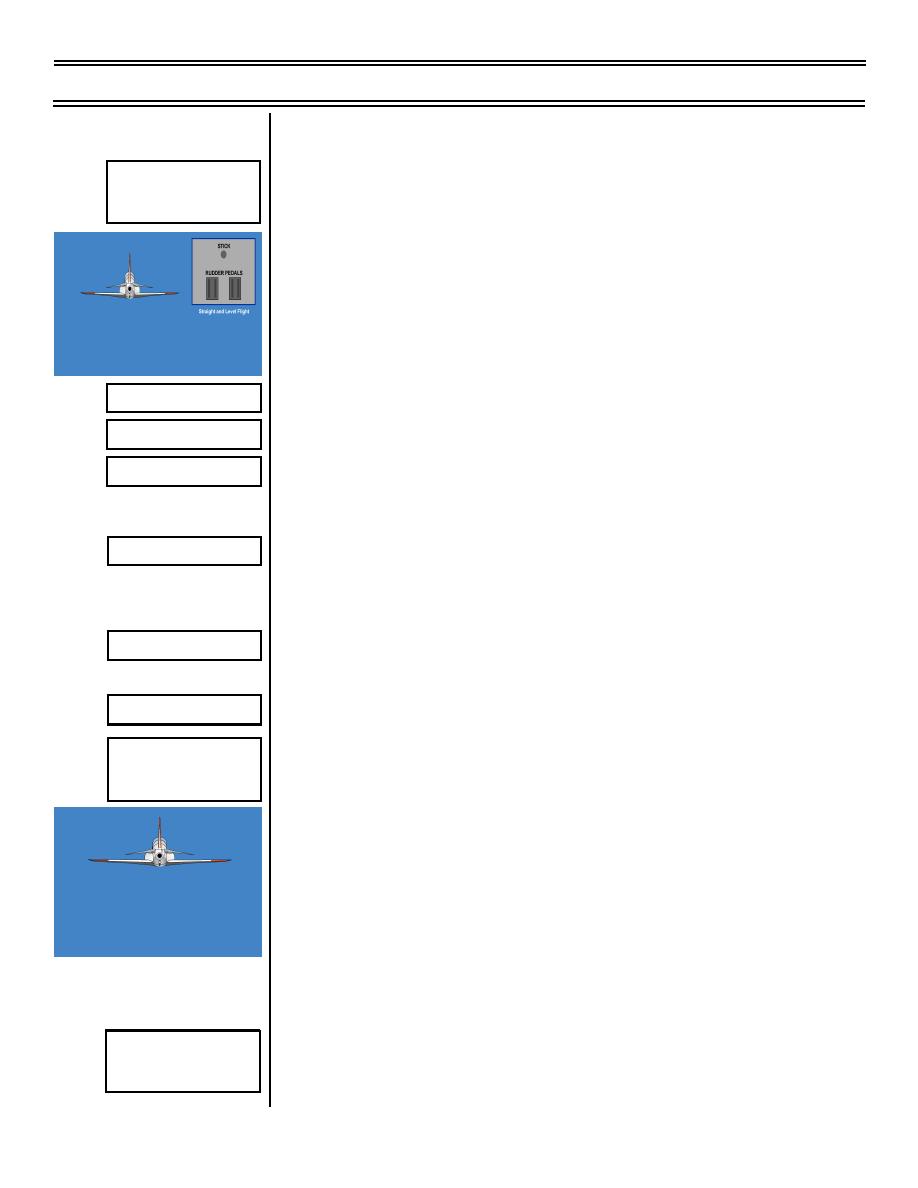 |
|||
|
|
|||
|
|
|||
| ||||||||||
|
|  Slow-Speed Flight, Stall and Spin, and AOA System
T-45A/C TS, E2-C2, ADV & IUT Aero-03
d.
Pitchdown departure*
Sg 2, fr 25
Pitchdown Departure
(7 overlays)
(1) Entry example:
(a) From medium airspeed, smoothly raise
the nose to a wings-level, 30-40
degree, noseup attitude
(b) Simultaneously displace the aileron to
the full left position while pushing the
rudder to the full right position
Overlay 1
(c) Reduce power until AOA rises and stall
Overlay 2
occurs, then force the elevator to a full
Overlay 3
nosedown position
(2) Result:
Overlays 4-5
(a) A violent nosedown, rolling departure
occurs to the left (in the direction of the
aileron) with no significant warning to
the pilot
Overlay 6
(b) Negative g and roll rates in excess of
500 degrees per second are likely
Overlay 7
(c) Rudder blowout is common due to high
aerodynamic loading
Sg 2, fr 28
Pitchdown Departure
(d) If any yaw rate is sustained after the
initial departure, an inverted spin is
likely to develop
e.
Nose-high, 80-90/90-100 degree departure*
(1) Entry example:
(a) From medium airspeed, smoothly raise
the nose to a wings-level, 80-100
degree, noseup attitude
Sg 2, fr 29
(b) Allow the aircraft to slow to zero
Fig 9: 80-90 Degree
airspeed
Departure(3 overlays)
(9-99) Original
Page 3-16
|
|
Privacy Statement - Press Release - Copyright Information. - Contact Us |